
Why Is My WordPress Site So Slow? 3 Steps to Speed Up Your Website7 min read
April 7, 2021If your website is taking too long to load, it could be negatively impacting your visitors’ experience. This also hinders your ability to rank well in the search engines (SEO). If this describes your current frustration, you may be wondering “Why is my WordPress site so slow?”
Typically, WordPress sites tend to load slowly because they do not properly utilize page caching or because the site’s content is being served from a slow server.
The good news is that if you know enough about website creation and maintenance, the tools required to speed up your WordPress sites are free. But if this work is beyond your capabilities, our team is able to do this for you at a very low rate (request a quote to find out exactly how much).
Keep reading to learn the 3 steps you can take today to speed up your WordPress website, and improve its load time by as much as 60%.
Note: these instructions are intended for educational purposes only. Implement these at your own risk. We absolutely recommend backing up your website before making any changes to avoid data loss.
Step 1: Before You Begin, Evaluate Your Website’s Current Speed
Before you begin optimizing your WordPress website’s speed, it’s important to record how fast it loads currently, so that you know if the changes you made helped the speed or hurt it.
If you know what you’re looking for, you can get an idea of how much of an improvement in speed you’ll be able to get from these optimizations. We often use Pingdom to evaluate this. Go to https://tools.pingdom.com and put in your website’s home page and see how fast it loads. Run the test 3 times so you can get an overall average of the load time since it can vary slightly.
For one of our clients, here’s what Pingdom showed us:
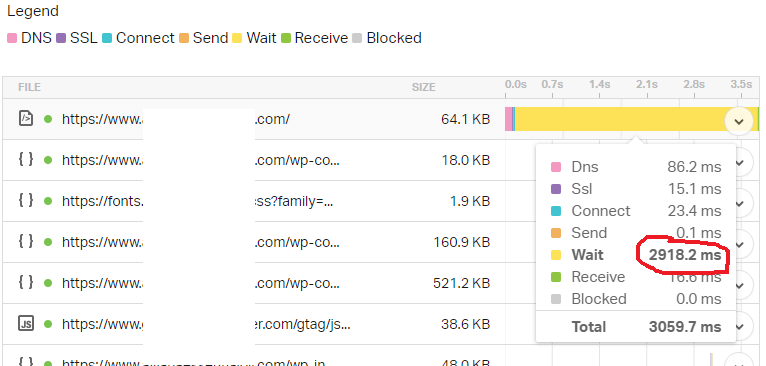
If you scroll down on Pingdom and mouse-over the first line in the “File requests” section, note the “Wait” milliseconds. If it’s more than 800ms, you’ll likely see a noticeable improvement in speed by implementing the next step, page caching.
Here’s the total load time that Pingdom reported for one particular client website’s before we did any speed optimizations:
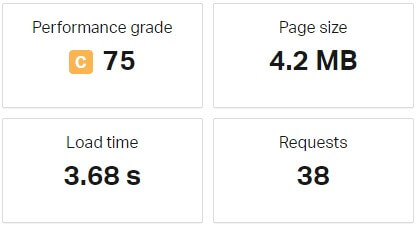
Yes, that’s a whopping 3.68 seconds, which is very, very slow. You’ll see later on how much we were able to improve that.
Step 2: Setup Page & Browser Caching With W3 Total Cache
There are a number of great WordPress plugins that allow you to implement page caching. Many of them work great, but in this tutorial, we’ll be using W3 Total Cache. We have found it to be the easiest to set up and manage, and it’s free.
To begin, login to WordPress as an admin and go to Plugins > Add New. Search for “W3 Total Cache” and click the “Install Now” button. Once it finishes installing, click “Activate”.
Each website will need a slightly different configuration depending on a number of factors, such as whether you or not your site is e-commerce enabled, if visitors can login to see custom content, etc. We do this analysis ourselves if you hire us to speed up your website.
As a general rule, start by going to Performance > General Settings. Then scroll down and check the box to enable “Page Cache” and then click “Save Settings & Purge Caches”.
Once you finish this step, load up the home page of your website once (or whichever page on your site you tested in the previous step) to build the cache, then go back to Pingdom and test again. Here’s the speed of the client’s website we showed earlier, this time after we set up page caching:
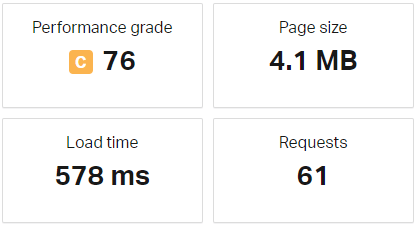
Yep, that got it down to a 0.578 second load time. Compared to the previous 3.68 second load time, that’s an 84% reduction in load time!
Ready to drive that load time down even further? Time to move on to Step 3.
Step 3: Setup Cloudflare To Deliver Your Content Quickly
Not having page caching set up is one of the biggest reasons WordPress sites are so slow. But there’s still more you can do. If your server is not the fastest one on the block, this step may have a big impact.
Essentially, in this step we setup CloudFlare to combine javascript files into one stream on page load, which often greatly reduces the overall page load time.
First, set up a free Cloudflare account. Then click the “+ Add a Site” button from the Cloudflare dashboard. Follow the prompts. Make sure all of the DNS records are listed and that only the www and non-www A records are set to proxy (all others should be “DNS only” to avoid email delivery issues unless you know what you’re doing here).
Once you’ve finished the setup process, in Cloudflare go to the Speed tab, and then the Optimization tab. Scroll down and turn on “Rocket Loader™”
Give it a minute or two and then run your speed tests again with Pingdom. Here’s how fast another client’s website was loading after setting up page caching but before setting up Cloudflare:
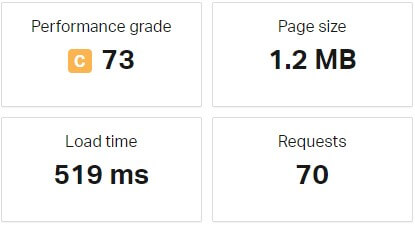
That’s 0.52 seconds, which isn’t bad at all. But here’s how fast the same page on the same website loaded after setting up Cloudflare with Rocket Loader:
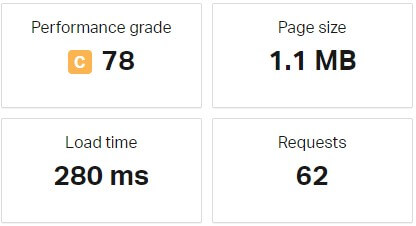
As you can see, using Cloudflare with Rocket Loader reduced the page load time from 0.519 seconds down to 0.28 seconds, a 46% reduction in load time. And yes, that’s after page caching was already set up.
How much of an improvement did you see after implementing the steps above? We’d love to hear in the comments section below!
Did you get stuck? Need a helping hand? Reach out to our team to see how we can help you speed up your WordPress website.
WordPress Site Speed FAQ’s
Do Inactive Plugins Slow Down WordPress?
No, inactive plugins do not slow down a WordPress website. When WordPress handles visitor requests, it does not even look for inactive plugins, so load time is not impacted at all.
Why Is WordPress Admin So Slow?
If you went through the steps we outlined above and your website is loading much faster for visitors, but your admin area is still running slow, this is likely because your server is not very fast. Page caching and Cloudflare do not impact the speed of your server. You may need to look into a faster server plan on your web host or explore one of our hosted WordPress solutions.